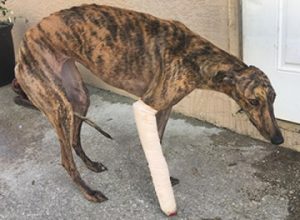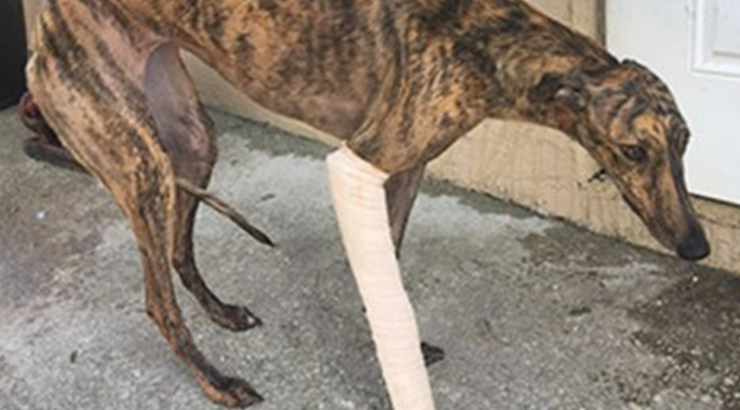
Rebate schemes are offered to racing greyhound owners by their industry body in each state to subsidize the cost of treating dog injuries.
Despite this, most owners choose to kill a dog rather than treat its leg fracture which is the most common racing injury – see evidence of track euthanasia 2020, 2021, 2022, 2023, 2024. Racing dog owners make these callous decisions because:- treating a simple fracture costs about $4,500, while a complex one can cost $10,500 or more, (based on averaged 2022 vet charges),
- there’s no guarantee a dog will run as fast as it did before the injury, so owners consider a dog has no further value (unless it is a champion and can be used for breeding),
- many owners simply don’t want to deal with the burden of caring for a recovering dog, or with the effort of then rehoming it.
- what these rebate schemes achieve in terms of greyhound welfare outcomes, or
- how much money each scheme dispenses annually.
Rebate schemes in brief
The sums offered by rebate schemes are insufficient to cover a leg fracture – the most common racing injury. Also, injuries covered must first be deemed eligible and every scheme has different rules.
-
- New South Wales: This scheme launched last year and offers:
- up to $1200 for transport/vet services,
- up to $3,500 for surgery on greyhounds injured during an official timed GRNSW race in NSW (not trials) where the incapacitation period is more than 60 days – this is a reduction on the $5K offered by the prior scheme,
- plus eight weeks at $100/week for post-operative care of a greyhound by its industry participant.
- Victoria: For simple surgical cases up to $3,000 is granted, and for more complex procedures up to $5,000.
- For initial assessment purposes (whether the injury is eventually deemed acceptable or not) the scheme will cover all ”reasonable” vet costs to reach a diagnosis, but won’t fund any subsequent costs.
- Post-operative care (Rehabilitation Grant) support is $70/week if the rehabilitation is done by the owner or $105/week if the participant chooses an industry-approved rehab facility. In both cases the support is offered for 12 weeks maximum.
- Queensland: After the on-track vet determines that the injury meets the eligibility criteria, the owner will receive financial aid only if the final bill exceeds $1,000 up to a maximum of $5,500. Also available is $50/week for up to 13 weeks of post-operative rehabilitation, adding up to a max of $650.
- South Australia: Up to $200 for non-surgical cases and $1,200 for surgical cases, plus rehabilitation support of $50/week for up to six weeks.
- Tasmania: Up to $3,000 is offered for eligible injuries in both surgical or non-surgical cases.
- Western Australia: Up to $5,500 for eligible surgical cases; if continued treatment is required, $50 for recovery for up to 13 weeks, adding up to $650. If the owner opts for full recovery, the dog’s ownership will be transferred to RWWA’s Greyhound as Pets program and it will be available for rehoming after recovery.
- From 1 February 2024, the WA scheme is taking a backwards step by leaving ownership of an injured greyhound with its industry participant, rather than with GAP – see here.
- Northern Territory: Up to $1,000 for eligible surgical cases and up to $200 subsidy for further investigation, when there is no need for surgery.
- ACT: Dog racing is banned in the ACT..
- New South Wales: This scheme launched last year and offers:
